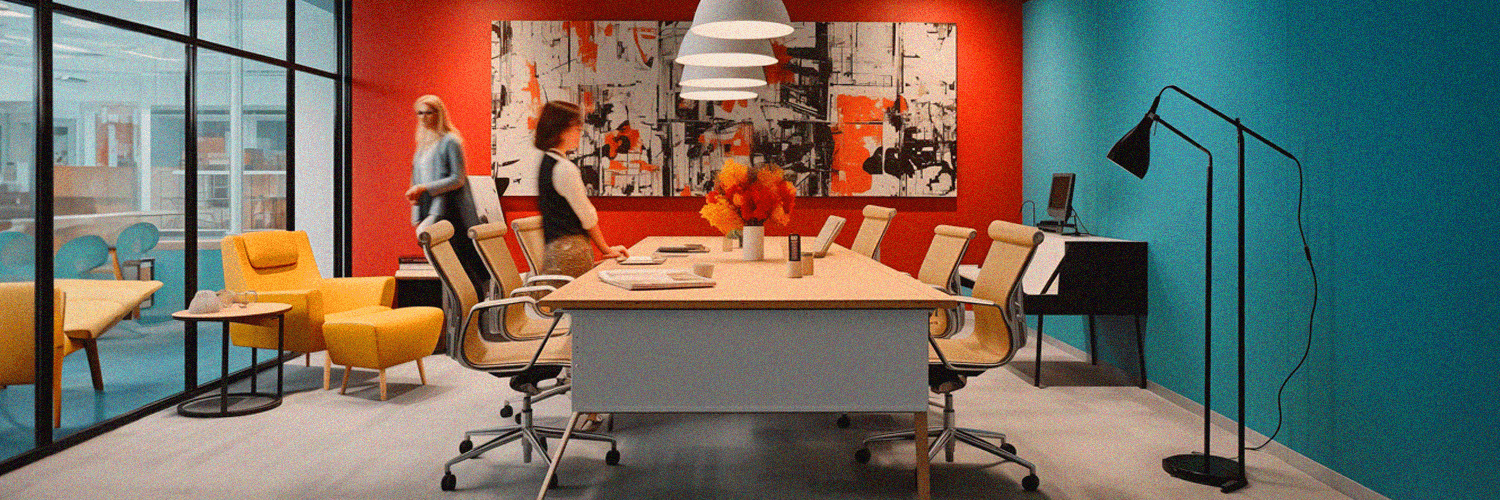Office seating charts are crucial in creating a productive and collaborative work environment. They not only dictate the physical layout of the office but also influence employee interactions and workflow dynamics.
Understanding the fundamental principles and best practices behind office seating charts is essential for fostering a positive and efficient workplace culture. This article is a comprehensive guide to help you navigate the intricacies of office seating arrangements, providing valuable insights and practical tips for optimizing your workspace.
Introduction to Office Seating Charts
Let's start by figuring out what an office seating chart really is. It's more than just a map of who sits where in the office; it also reflects how teams communicate, how they're organized, and even the workplace atmosphere. Despite its simplicity, this tool has the power to shape interactions and impact productivity in significant ways.
Importance of a Well-Organized Seating Arrangement in the Office
Scientific research shows that our physical environment dramatically influences our mood, performance, and relationships. Therefore, even small details like proximity to windows or easy navigation within an office can significantly impact employee satisfaction. By using an intuitive office seating chart template, managers can address these factors without needing to think about them every day. This helps create a workspace that fosters positivity, creativity, and maximizes employees' potential while enhancing their overall well-being.
Benefits of Having a Seating Chart in the Office
Optimizing your office seating setup with well-designed charts offers several key advantages:
- Encourages collaboration: organizing your workforce based on tasks or projects brings different people together, fostering collaboration and sparking innovative ideas.
- Enhances communication: a thoughtfully planned office seating structure can improve communication between teams and within them, provided you've considered your office floor map.
- Boosts productivity: strategic placement of essential resources in the seating plan leads to improved efficiency, less time wasted, and better workflow patterns.
- Fosters camaraderie: considerate desk arrangements promote familiarity among team members, cultivating friendly relationships and creating an inclusive workplace, which researchers link directly to higher job satisfaction.

Tips for Creating an Effective Seating Chart
Crafting a successful office seating chart isn't just about placing desks; it's about understanding what boosts productivity and collaboration. Here are some important factors to consider during your planning process.
Assessing the Needs and Preferences of Employees
When planning your office layout, start by considering your team's preferences. People work differently - some prefer a lively setting, while others concentrate better with fewer distractions.
Asking your employees about their ideal work environment is crucial. This way, you can meet various needs, such as access to natural light or proximity to facilities like restrooms.
Additionally, think about the equipment required by different teams. For instance, teams dealing with sensitive information might need more private spaces, while client-facing teams may require open and welcoming areas.
Remember to pay attention to details like the ergonomic setup of the office seating area to ensure staff comfort, which directly impacts productivity.
Taking into Account Collaboration and Communication Requirements
Office seating arrangements significantly impact communication dynamics in the workspace. More interaction often strengthens individual relationships and team unity, improving project completion rates.
When creating your office seating chart, assess whether specific departments frequently collaborate. If they do, it's beneficial to place these teams close together to encourage the easy exchange of ideas - impromptu discussions over coffee can spark valuable breakthroughs!
However, it's essential to balance efficiency through proximity with potential noise disturbances. Roles requiring focus might need a more secluded seating position to minimize distractions caused by higher noise levels.
Considering Employee Dynamics and Team Structures
Your office seating layout should mirror your organization's structure. Start-ups often prefer open layouts to encourage transparency, while traditional companies may opt for private offices to emphasize hierarchies.
However, it's crucial to customize each section of your layout according to the specific needs of different teams. A sales team that requires constant communication might benefit from a bullpen design, whereas creative teams often thrive in quieter environments that nurture imagination.
Neglecting these nuances in your office seating chart can lead to employee tensions. Clashing personalities or disruptive behavior may be intensified in close quarters, so it's essential to consider the dynamics between your colleagues when planning the office seating arrangement.
Methods for Designing an Office Seating Chart
Creating an effective seating chart requires both foresight and flexibility. Modern solutions offer a variety of tools and strategies to simplify this process while ensuring maximum productivity and satisfaction in your office.
Using Software and Online Tools for Creating Digital Seating Charts
Using software and online tools for office seating chart design offers several benefits. These digital solutions provide a quick and organized way to visualize desk arrangements, with accessible drag-and-drop features that enable you to experiment with different layouts before making any physical changes.
Commonly used tools include office floor plan generators, seating plan creators, and office mapping software. These platforms allow you to digitally plan various elements, such as walkways or window views, create virtual replicas of your actual office space, save different versions of your layouts, and make real-time adjustments.
Utilizing Workplace Management Software With Interactive Floor Maps
Utilizing workplace management software with interactive floor maps, such as YAROOMS, brings a myriad of benefits to the table. These solutions enable businesses to efficiently oversee the seating arrangements of employees in real-time, offering a comprehensive view of the office layout and who occupies each desk.
With interactive features, managers can quickly identify available workspaces, allocate seating based on team dynamics, and streamline employee communication. Additionally, the software's ability to collect analytics on employee interactions with the office provides valuable insights into how the workspace is utilized, facilitating informed decisions for future seating chart optimizations and enhancing overall productivity.
Incorporating Flexibility into the Seating Plan for Future Changes or Growth
When designing an office seating chart, it's vital to anticipate future changes and growth. Roles may shift, teams may grow or shrink, and new employees may join. To accommodate these changes, prioritize flexibility in your seating plan.
Consider using modular furniture that can be quickly reorganized as needed. Additionally, leaving some space unused for potential future expansion demonstrates foresight.
By creating an adaptable seating chart, you can proactively address potential spatial challenges in the future, ensuring that your workspace remains conducive to collaboration and productivity regardless of any changes that may arise.

Best Practices for Implementing and Managing a Seating Chart System in the Office
When it comes to implementing office seating charts, there are some critical steps you should follow.
Communicating the New Seating Arrangement with Employees
The first fundamental step to implementing an effective office seating chart is unequivocal communication with all employees. Involving them from the get-go not only promotes transparency but also garners their support for this change.
- Prioritize face-to-face meetings or video conferences to discuss changes and gather opinions.
- Clearly explain why you're adopting this office seating arrangement and how it can offer potential benefits.
- Provide an overview of what the new desk arrangements would look like using visual aids such as a floor plan desk or the office layout map.
Remember, clear communication keeps anxieties at bay and sets clear expectations for everyone involved!
Maintaining an Updated and Organized Seating Chart Database
Successfully managing an office goes beyond creating a functional seating arrangement — maintaining an up-to-date database plays a crucial role, too.
Automated solutions like office management software with built-in floor map or seat planner tools help oversee any future changes efficiently.
No matter which tool you choose, ensure that it allows easy edits when team reshuffling or revisions in the workplace seating area configurations due to company growth or restructuring. Keep track of any modifications done to your digital office seating chart template - date these alterations so historical data can be restored if needed.
Recognize that managing and updating your office seating charts is crucial for avoiding confusion while keeping everyone informed of any significant shifts.
Ongoing Evaluation and Adjustments Based on Employee Feedback and Needs
Periodic evaluation and apt adjustments based on staff feedback are necessary for success.
Encourage employees to share their experiences about the new office seating arrangement. They'll provide valuable insights you haven't yet contemplated. Use these to improve your system further.
Pay close attention to hints of decreased productivity, dissatisfaction, or communication issues following the reorganization. If needed, use a seating plan creator or software for quick rearrangements.
By continuously striving for improvement and demonstrating flexibility in adapting to employee needs, you pave the way for an optimal environment that embodies effective office seating arrangements.
Efficient office seating chart is not a one-size-fits-all solution, nor is it set in stone. It's designed to adapt to your company's growth and changes while ensuring employee satisfaction and boosting productivity. Adopting these best practices will ensure smoother transitions while positioning your company as a supportive and responsive environment open to positive changes!
Impact of an Efficient Seating Chart on Productivity and Employee Satisfaction
An effective office seating chart doesn't just organize where people sit; it strategically places employees in a manner beneficial to productivity, collaboration, and satisfaction. Let's break down the statement further.
Enhanced Collaboration and Communication Within Teams
A well-devised office seating arrangement offers more than just a neat-looking floor map—it paves the way for improved team synergy as well. When like-minded individuals or those working on similar projects are seated together, it fosters collaborative growth and facilitates smoother intra-team communication.
Studies affirm that physical proximity can significantly boost collaboration rates within teams. By allowing easy face-to-face interactions, employees can quickly resolve queries, brainstorm ideas, and discuss project developments without needing to hop over to another room or schedule formal meetings.
Remember that the benefits derived from such collaborative setups depend primarily on how effectively you have created your seating chart office layout to address each team's unique communication needs.
Creating a Sense of Belonging and Fostering Positive Work Relationships
Equally important is fostering a sense of belonging among employees—a task that a well-thought seating position in the office can assist immensely. Being part of an assigned' office area', employees tend to feel connected with their co-workers set in the same zone.
Contrary to some might think, this arrangement isn't about instilling divisive borders within the workplace. Instead, it's about creating office neighborhoods - micro-communities within larger corporate structures where individuals can share experiences, insights, joys—and yes—even lunch plans!
By encouraging positive work relationships through strategic desk arrangements, companies can create more productive work environments while reducing factors leading to employee turnover.
Increasing Overall Efficiency and Workflow Management in the Office Environment
Efficient workflow management is greatly influenced by how your office seating is arranged. Assigning seats based on individuals' or teams' roles in a project's pipeline can significantly streamline workflows.
Picture a document requiring multiple approvals before moving to the next stage. If all approving authorities were seated nearby, wouldn't it speed up the process while reducing potential errors from lost inter-office communication?
In essence, a well-designed seating chart serves as a silent guide for organizing work sequences based on practical logistics rather than personal preferences. While it may need occasional adjustments for new hires or shifting teams, its benefits outweigh the upkeep.
Ultimately, a thoughtfully organized office layout not only promotes smooth teamwork and healthy workplace relationships but also facilitates efficient workflow management.
-2.png?width=928&height=523&name=2%20(1)-2.png)
Wrapping Up
The office seating arrangement does more than just assign seats—it impacts communication, teamwork, and job satisfaction. A smart seating chart encourages collaboration by placing teams together, sparking idea exchange and fostering innovation. It also promotes positive relationships by considering individual work styles, balancing group interaction and solo time.
Plan for future changes with a flexible seating chart to accommodate growth and departmental shifts without disrupting daily operations. Utilize your office mapping software to maintain a clear overview of employee desks and optimize space effectively.
Overall, strategic seating planning can create an environment that supports employees' best performance while respecting their needs. Keep communication open and involve your staff in the process to ensure a smoother transition and greater satisfaction. Always seek feedback and make necessary adjustments to improve your seating arrangements over time.
FAQ: Office Seating Chart
Let’s answer some frequently asked questions about office seating charts.
How to Do a Seating Plan in an Office?
Creating an effective seating plan in an office involves several key steps:
- Assess Needs: Understand the requirements of your employees and the nature of their work to determine the best seating arrangement for optimal productivity.
- Analyze Space: Evaluate the office layout and available space to identify the most suitable arrangement that encourages communication and collaboration.
- Consider Workflow: Organize seating based on the workflow of different teams and departments, ensuring that employees in related roles are situated close to each other.
- Incorporate Preferences: Consider individual preferences and work styles, such as the need for privacy or open communication, to create a balanced and accommodating environment.
- Plan for Growth: Anticipate future changes and growth within the organization, allowing flexibility in the seating plan to accommodate potential expansions or restructuring.
- Utilize Technology: Explore using office mapping software or online tools to visualize and experiment with different seating layouts before implementing physical changes.
- Seek Employee Feedback: Involve employees by gathering their input and considering their suggestions to ensure a more inclusive and satisfactory seating arrangement.
- Regular Assessment: Continuously monitor the effectiveness of the seating plan, gather feedback, and make necessary adjustments to optimize the workspace and improve employee satisfaction and performance.
Do Seating Plans Work?
Office seating plans can effectively create a conducive and productive work environment, provided they are thoughtfully designed and implemented. When carefully executed, office seating plans can foster better communication, collaboration, and employee teamwork. They can also help in optimizing workflow, enhancing employee satisfaction, and promoting a positive work culture.
However, the success of an office seating plan largely depends on factors such as the nature of work, the preferences of employees, the organization's culture, and the flexibility of the seating arrangement to accommodate changing needs and growth within the company. Regular assessment and adjustments based on employee feedback can contribute to the continued success of an office seating plan.
What Is the Best Seating Arrangement for an Office?
The best office seating arrangement depends on the nature of the work and the organization's culture. Some effective options include open floor plans, cubicles, team clusters, hot-desking, and quiet zones. Striking a balance between collaboration and privacy is key, and gathering employee feedback for adjustments is crucial.












